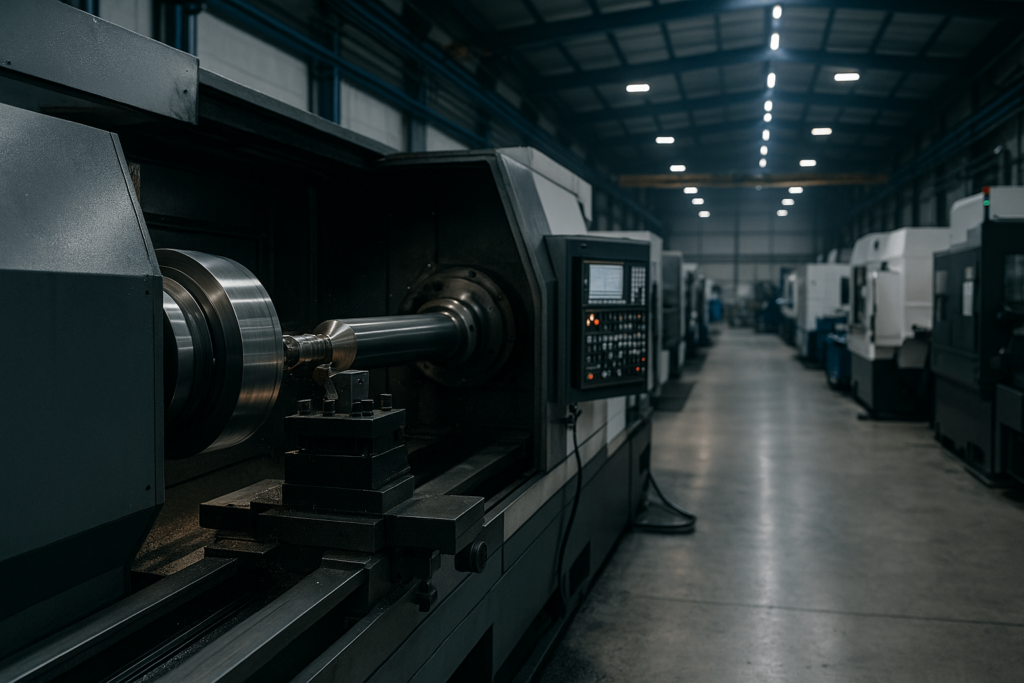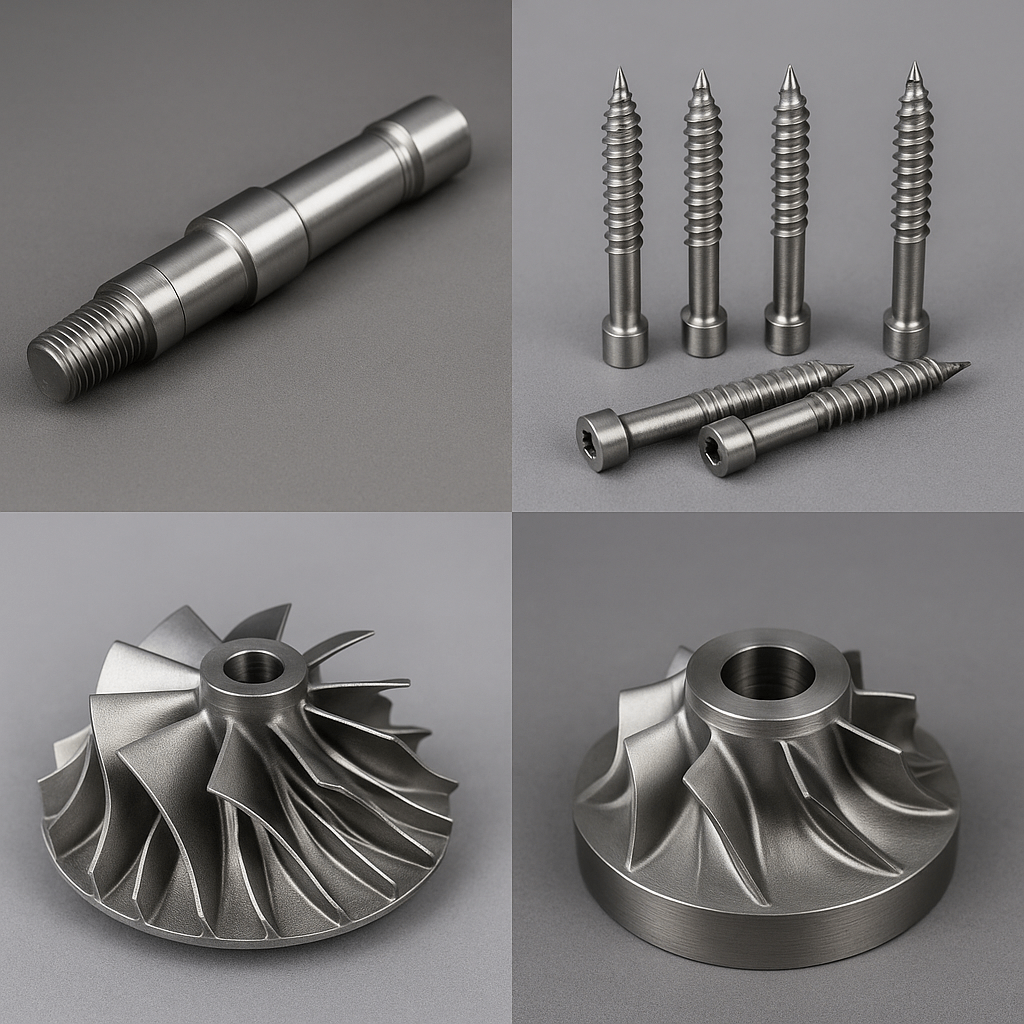Why Procurement Professionals Should Care About Lathes
For procurement professionals, a lathe isn’t just a machine—it’s a predictable engine of output. In modern metal manufacturing, understanding how lathe operations affect dimensional integrity, lead time, and cost is essential for making informed sourcing decisions.
Whether you’re procuring stainless shafts or precision bushings, knowing how lathes shape outcomes lets you evaluate supplier capability with clarity. It’s not about becoming a machinist—it’s about reducing risk through process visibility.
What Lathes Enable in High-Volume Metal Manufacturing
In industries like aerospace, energy, medical, and automotive, the machining lathe remains irreplaceable. It enables predictable geometries, rapid changeovers, and exceptional repeatability—especially for parts like spindles, fasteners, and inserts.
At YISHANG, our CNC lathe machines are tailored for batch-controlled production. We support your large-volume needs with stable cycle times, verified tolerances, and seamless integration into your procurement workflow. These turning solutions for bulk metal parts ensure you get consistent output across every shipment.
Getting Past the Basics: What Does a Lathe Do?
Turning, Not Guessing
A lathe rotates a fixed workpiece while a stationary tool carves away material. This process, called turning, produces highly accurate round shapes. That’s the short version.
Why It Outperforms Milling for Cylindrical Geometry
When it comes to symmetrical parts—like axles, couplings, or stepped shafts—lathe work is faster, more stable, and delivers cleaner concentricity than milling setups. It’s built for rotational control.
Use Cases That Matter
Lathe operations cover everything from roughing to finishing. Our machines handle external diameters, internal bores, grooves, knurling, threading, and multi-profile contours—all critical in scalable part production. This is especially relevant for custom lathe machining for industrial components that require exact specifications across varying shapes and batch sizes.
Key Output Metrics & Repeatability
For Buyers, Precision Must Be Proven
Numbers alone mean little unless tied to performance. CNC lathes at YISHANG are optimized around key metrics that align with procurement priorities.
Our Deliverables, Explained
Concentricity ≤ 0.01 mm — Ensures flawless rotation and tight fits in assemblies.
Surface Finish (Ra): 0.2–0.8 µm — Reduces friction and eliminates extra polishing steps.
Repeatability: Cpk ≥ 1.67 — Maintains dimensional control over thousands of units.
Each of these metrics supports your quality standards and limits scrap, reducing hidden costs.
Our Documentation Backing It Up
We provide every batch with:
Statistical Process Control (SPC) reports
Coordinate Measuring Machine (CMM) data
Tool lifecycle and offset logs
Together, these make each shipment traceable, verifiable, and audit-ready.
Industry Applications at a Glance
| Sector | Common Lathe Parts | Key Standards |
|---|---|---|
| Automotive | ABS housings, bearing races, crank pins | Tight roundness, ISO 2768 |
| Aerospace | Turbine sleeves, connector rings | Ra ≤ 0.4 µm, AS9100 |
| Medical | Titanium orthopedic pins, handles | ISO 13485, biocompatibility |
| Energy | Pump shafts, threaded pipe spools | Heavy-duty machining, ISO 9001 |
At YISHANG, we apply industry-specific workflows and in-process checks for each application—ensuring not just fit, but functional longevity.
Why Mismatched Processes Cost You More
The Wrong Setup = Lost Margin
Using milling to make parts suited for lathes often results in excess cycle time, unstable surface finish, and poor concentricity.
Consider This Case
Turning a bronze flange:
On a CNC lathe: 70% faster, tool wear reduced by 40%, better surface quality
On a mill: Longer runtime, higher tool cost, secondary finishing often required
Source for Process, Not Just Part
YISHANG doesn’t just quote dimensions—we analyze your RFQ to assign the correct manufacturing process from the start. That’s how we keep cost and lead time low, without sacrificing control.
Human + Digital Quality Control
Why Operator Skill Still Matters
CNC automation doesn’t mean hands-off. Our machinists:
Interpret complex engineering drawings
Program custom toolpaths for multi-axis lathes
Monitor tool wear and real-time cutting behavior
Their input ensures the process adapts to each new batch.
What Our Systems Contribute
We combine expert oversight with:
Live deviation tracking
Automated tool correction
Digitally logged inspection routines
The result? Transparent traceability and consistent conformity—batch after batch.
Why the Lathe Still Matters to Wholesale Buyers
What does a lathe do for procurement teams? It ensures your parts are:
Made for volume
Built to spec
Delivered with fewer surprises
A strong lathe setup translates to predictable production. With YISHANG’s lathe-first capabilities, you eliminate the guesswork in scaling up orders.
We’re ready with documentation, repeatability stats, and machining bandwidth to support aggressive fulfillment cycles.
Sample Industry Specs
| Industry | Typical Tolerance (± mm) | Surface Finish (Ra µm) | Volume Capability |
| Aerospace | 0.005 – 0.01 | 0.2 – 0.4 | 500–5,000 units/month |
| Automotive | 0.01 – 0.02 | 0.4 – 0.8 | 10,000+ units/month |
| Medical | 0.005 – 0.015 | 0.3 – 0.6 | 500–3,000 units/month |
| Energy Sector | 0.015 – 0.025 | 1.0 – 1.6 | 2,000–6,000 units/month |
Our facilities are configured to meet both low- and high-volume programs with the same documentation rigor.
Procurement-Oriented FAQ
What does a lathe do in manufacturing?
It rotates a part while tools cut away material—delivering precise, round components at volume.
What is the best process for round parts—lathe or mill?
Use a lathe for concentric forms. Mills are for planar or irregular geometries.
Can lathes support high-throughput orders?
Yes. CNC lathes operate continuously with process automation and digital QA.
What metals can be used in a lathe?
Steel, aluminum, brass, copper, titanium, bronze, and engineered plastics.
What specs matter in a lathe RFQ?
Define your tolerances, Ra values, part material, batch size, and required documentation.
How do I choose a lathe for high-volume turning?
Look for a high-end CNC lathe with programmable offsets, live tooling, and integrated QC.
Is CNC lathe better than manual for bulk orders?
For consistent geometry and lead time, CNC lathes are essential.
If you’re sourcing metal parts that require precision turning, let’s talk. YISHANG provides CNC lathe services designed to meet the demands of modern procurement—on time, on tolerance, and audit-ready.



